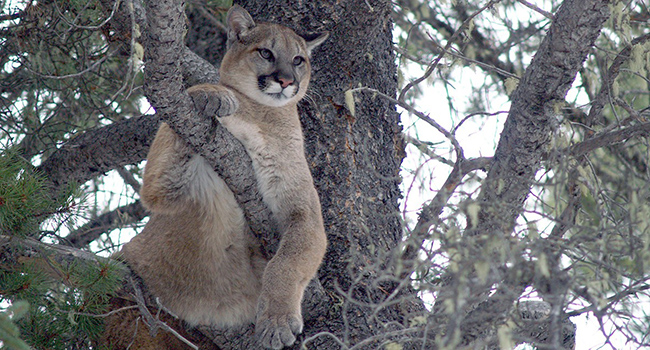A study by University of Alberta biologists identifies three key factors for how cougars select habitats near roadways: traffic, topography and daylight.
“Cougars will avoid roads if there is human activity or while there is daylight,” explained Mark Boyce, professor in the Department of Biological Sciences and Alberta Conservation Association chair in Fisheries and Wildlife. “However, cougars will select habitat near roadways if there is good cover in terms of vegetation and topography, or if the roads are remote.”
The researchers conducted the study in southwestern Alberta, collecting GPS data from 12 cougars to determine how the animals navigated areas with roadways. The results show that rough topography allows cougars to use areas close to roads, and that the animals are less likely to avoid roads with low traffic or during night hours.

Mark Boyce
“Conservation in North America has been remarkably successful at restoring cougars and other large carnivores. Now, we need to learn how to coexist,” said Boyce. “Previous research has shown that road placement and activity on roads can have a large influence on habitats for other animals such as grizzly bears and elk. This study shows that this holds true for cougars as well.”
The research also has implications for wildlife conservation more broadly. Wildlife managers should consider roadside topography when assessing the potential effects of expanding roadways.
“And people living in areas with existing cougar populations should use caution,” added Boyce. “Our study shows that rugged topography may provide cougars with a false sense of security that could result in an increased probability of human-cougar encounters.”
Jeremiah Banfield led this research during his graduate studies under the supervision of Boyce, and is now the elk biologist for the State of Pennsylvania.
This research was conducted in collaboration with Alberta Environment and Parks and Parks Canada. Funding for this research was provided by the Natural Sciences and Engineering Research Council of Canada (NSERC), Shell Canada, and the Alberta Conservation Association.
| By Katie Willis
This article was submitted by the University of Alberta’s online publication Folio, a Troy Media content provider partner.
The views, opinions and positions expressed by columnists and contributors are the author’s alone. They do not inherently or expressly reflect the views, opinions and/or positions of our publication.

